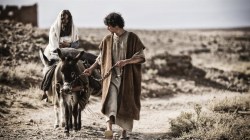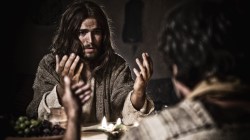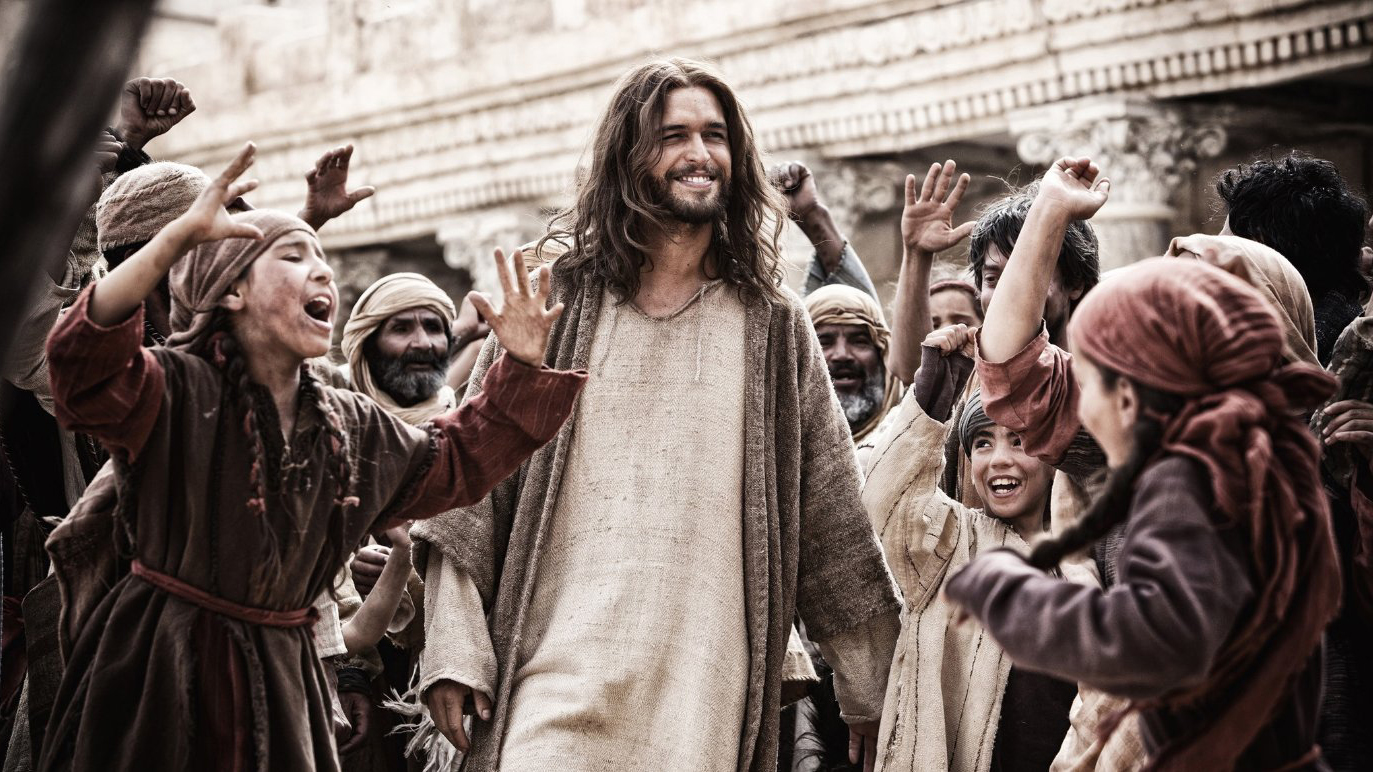Watching Son of God is a bit like listening to a pretty good tribute band doing a set list of Top 40 hits you have heard most of your life. The delivery is not bad, and the individual songs carry enough significance for you (both emotional and biographical) that the performance really only needs to remind you of what you already love. If that comparison feels glib, then watching Son of God could be compared to watching someone else's professionally filmed wedding video. You understand why it is so precious to the person sharing it with you. But it is a summary of what happened, not a re-creation of the event. Plus you risk offending your hosts if you mention that one of the bridesmaids is wearing slightly different-colored shoes, or that the organist is playing a different song than what was listed in the program they showed you.
 Casey Crafford / Twentieth Century Fox
Casey Crafford / Twentieth Century FoxWhat I mean to say is that watching Son of God was not a dreadful experience, but it wasn't a particularly inspirational or entertaining one, either. We can excuse the latter fact on the grounds that in spite of its packaging, the gospel narrative isn't meant to be a vehicle for entertainment. The former is more about the medium than the message.
Marshall McLuhan is credited with coining the axiom that the medium is the message in his book Understanding Media: The Extensions of Man. Two decades later, Neil Postman pithily expressed an important related thought: religion, he opined, rarely broadcasts well, because it is impossible to sanctify a television set.
Postman's conclusion may be slightly less inescapable in an age of DVDs and streaming video. Today, we have more access to a variety of content, and more control over how much of it appears on our TVs.
But the movie theater is a different story. As independent theaters gradually go out of business, there has come to be, if anything, less diversity at the movies. Theaters try to keep money flowing by investing in IMAX screens and 3D projectors to justify raising prices. Going to the movies is an event, an excursion, and the "go big or go home" insistence on spectacle is the creed of the movie theater.
That's important when we're considering both how Son of God works and how it doesn't. Son of God is edited from footage already broadcast on television (with the addition of some deleted scenes). So it seems evident that it is concerned with giving Christians an excuse rather than a reason to go to the theater. (Many of the Christians who go to see the film will have not only seen this story before, but they will have seen this footage before.)
When a narrative film (say, the Lord of the Rings trilogy) releases a director's cut or a DVD with extended footage, the goal is to add value so the viewer will be prompted to buy something he's already seen. Or we buy the DVD or digital film to own what we have already experienced, so we can watch it (and relive the experience) any time. But in the case of Son of God, viewers may already have the DVDs—so what they are really purchasing is an experience in a theater. So to review Son of God requires as much commentary on the experience theatergoers are buying as the film itself. And here again, the ability to buy DVDs and digital downloads of films has radically changed the reasons that we still think of theatrical screenings as important.
A seminal event in my own love affair with movies came when I was finally able to see Lawrence of Arabia on the big screen in the 1980s. Theatrical reruns were a big deal once, because films that my generation had only seen emanating from our TV screens (instead of projected onto them), complete with commercial interruptions and cropped aspect ratios, were gradually made available in the forms they were intended to be seen and which showed them to their advantage: as a movie, at a movie theater.
These days, though, with dimmed projector bulbs and texting and talking consumers at the theater, the home viewing experience may in some instances be aesthetically superior to the public one. A theatrical setting for a film like Son of God is important only for the residual prestige the cinema screen has over the TV, not because we have to go to the theater to see a film the way it was originally intended to be seen.
 Joe Alblas / Twentieth Century Fox
Joe Alblas / Twentieth Century FoxIf anything, seeing this film at the theater hurts rather than helps its production values, because the footage was edited, paced, and designed to be seen as a television program. More than one scene cut in the film looked and felt like a mini-climax designed to lead into a commercial break. The intimacy and immediacy of some scenes—the feeding of the crowd with loaves and fishes, for instance—felt more distant in a theater, while the special effects that stand out in a television production (like Jesus walking on water) don't feel quite as spectacular when they are projected on the same screen where you just saw Mount Vesuvius explode the week before.
Then again, a theater is a public space, and worship is a communal experience. Ten years ago, when I reviewed The Passion of the Christ and criticized the film's score, a colleague mildly chastised me for approaching Passion "like a movie." When I asked her how she approached it, she said as an occasion for worship.
The optimist in me wants to believe that the campaign to buy out theaters so that Son of God plays on every screen is genuinely about wanting to enhance the viewing experience by sharing it with other believers. The cynic in me wonders whether such cause-marketing is not a tacit admission that some viewers might only select the film if they have no other options.
As a devotional tool—a moving picture Bible—the film's simplicity is probably an asset. If it lacks the artistic ability of The Gospel According to St. Matthew or The Miracle Maker to defamiliarize the story, then show it to us anew, neither does it come with The Passion of The Christ's gory sensibilities or Last Temptation's hopelessly muddled theology. The miniseries' Satanic Obama doppelganger has been excised from the film, leaving Mary Magdalene's inclusion with the apostles at Jesus's ascension as the most likely editorial choice to rankle some believers.
 Casey Crafford / Twentieth Century Fox
Casey Crafford / Twentieth Century FoxThe film also muddies rather than clarifies the roles of Pilate and Caiaphas in seeking Jesus's crucifixion. The film's tagline is "Their empire. His kingdom." That would suggest a socio-political emphasis, but the film foregrounds the conflicts with ruling Jewish elders to such an extent that the Romans come across as their police force rather than their rulers. And Son of God begins and ends with John on Patmos, but the order of scenes and the inclusion of post-crucifixion scenes make it feel more like it's drawn from Luke's gospel.
Will any one of those quibbles, or the sum of them, bother the film's target audience enough to keep them from going? I doubt it. To the extent that the script is at all an exegesis, producer Mark Burnett has repeatedly said he wanted The Bible miniseries to be first and foremost a proclamation of God's love and Jesus's deity. It is hard to criticize a Jesus film that gets those two messages right, regardless of what media is used to deliver them.
Caveat Spectator
The depictions of Jesus being scourged and later crucified is bloody and disturbing, though nowhere near as explicit as the whipping scene in 12 Years a Slave or the R-rated The Passion of the Christ. The film depicts violence in a style more in keeping with (American) television than film, by depicting the aftermath more prominently than the act itself. Even so, torture and crucifixion are inherently disturbing acts to watch, regardless of how explicitly they are shown, and parental discretion is, as always, recommended.
Kenneth R. Morefield is an Associate Professor of English at Campbell University. He is the editor of Faith and Spirituality in Masters of World Cinema, Volumes I & II, and the founder of 1More Film Blog.












